June 28, 2020
A History Of The John Deere 4320 Tractor
Story by Benjamin Hain.
Originally published in Green Magazine, the #1 magazine for John Deere tractor, equipment, and memorabilia enthusiasts.
Follow this link, https://greenmagazine.com/ for more John Deere stories from Green Magazine.
During the late 1960s, when farmers across the country were using their new John Deere 4020 tractors, it is likely that most of them felt that they had the best tractor available at the time. The combination of power, comfort, features and reliability in that tractor were tough for any manufacturer to beat. There were, however, plenty of farmers who were willing and ready to buy a tractor with more horsepower than the 95 that the 4020 could provide. The 133 horsepower John Deere 5020 was available to these farmers, but could not be used in row crop applications. IHC’s 1206 tractor was one of Deere’s primary competitors at this time and its turbocharged engine, capable of producing over 112 horsepower at the PTO, was quite attractive to those farmers who were on the lookout for a bit more power.
In an effort to grab a few of the farmers who were looking for a more powerful row crop tractor, Deere produced a row crop version of its 5020. While this was a good tractor, it was a bit on the heavy and awkward side for row crop farmers and it did not prove to be as popular as Deere might have hoped. Deere’s next solution was what finally brought the company into the turbo field. In 1969, Deere released the 4520 tractor—essentially a scaled down 5020 that utilized a turbocharged version of the 4020’s 404 cubic inch engine. Tested at 123 horsepower, the 4520 provided nearly as much horsepower as the 5020 and saved the farmer a few thousand dollars. This tractor suffered a few problems in its design, but overall was another strong offering from Deere.
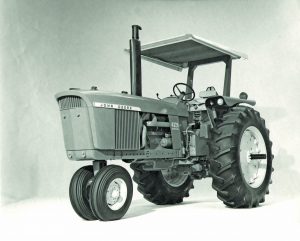
The problem that kept the 4520 from being a real hit with the public was that it was based on the 5020. Deere had brought more power to the customer at a lower cost, but it still hadn’t done away with the fact that it was a row crop tractor on a standard tractor frame.
Deere was getting closer, but a horsepower gap still remained between the 95 horsepower 4020 and 123 horsepower 4520. That gap was about to get larger, too, as Deere updated the 4520 for the 1971 model year, producing the 135 horsepower 4620. For the same model year, Deere brought forward a new offering, the 4320.
The John Deere 4320 was immediately marketed as the “Super-4020,” playing up its direct connection to its popular progenitor. In reality, there probably isn’t a more appropriate description of the tractor. Deere touted the 4320 as having “the power to take on the most sizeable 4020 equipment loads” and the 4320 really could do any job that a 4020 could, as well as a few that the 4020 could not. Utilizing another turbocharged version of the 404 engine, the 4320 produced 115 horsepower, giving it the ability to perform tasks that the 4020 simply did not have the muscle to complete or to perform those same tasks more quickly or smoothly.
Making the 4020 into the 4320 could have been a rather simple process for Deere. Slapping a turbocharger onto a 4020, incorporating a few token improvements to the cooling system and changing a number on the decal was almost all that was necessary. A few more horses surging through the drivetrain on a 4020 weren’t likely to destroy the rather robust inner workings of the tractor. Deere wasn’t about to make these minor changes and call it good enough, though.
Deere knew that while the 4020’s chassis probably could have handled most of that extra power without much of a problem, there was a chance that a few problems could crop up in the field and Deere certainly did not want its reputation for building durable tractors besmirched by the relative fragility of a single tractor model. To be sure that this did not happen, a whopping 700 pounds of mass were added to the drivetrain in order to strengthen it appropriately.
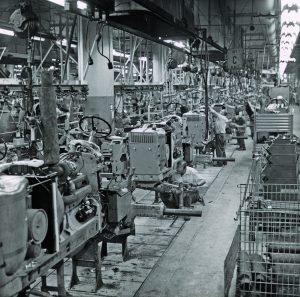
The fuel system for the 4320 was improved, compared to that of its predecessor. The injection pump was moved toward the front of the tractor where it could receive power directly from the camshaft gear, rather than the oil pump driveshaft, as had been the case in the 4020. This provided for a bit more direct power to the pump. Along with this was a change to the injection nozzles in the tractor.
The “pencil” type 9.5 mm nozzles were replaced by 21 mm Robert Bosch injection nozzles. While this was a perfectly acceptable change, it led to another that caused small problems for some. The “fuel supply banjo fitting,” a small adapter connecting the injection ports at the pump to the fuel lines, was, unfortunately, not nearly as fun as its name sounds. The problem was that the fuel lines required these adapters to connect to the fuel pump, rather than connecting directly to the pump. These six additional connections (one for each fuel injector) meant six more places where pressurized fuel could seep out of the system, creating a situation that was not all that important for the performance of the tractor, but was a bit greasy and unsightly.
The way in which a turbocharger can cause the most problems in an engine is through excessive heat buildup. The extra power added to the engine came at the cost of more heat and Deere needed to find a way to get that heat away from the engine. Three means were used to accomplish this task: air, coolant and oil. Each of these was given upgrades for the 4320.
The engine oil cooled the 4320 in a new way through the addition of piston cooling orifices. These orifices provided a stream of oil just underneath the cylinders, which helped to whisk a bit more heat away from the source. Eventually this oil ended up in the 4320’s engine oil cooler. While this cooler was much the same as the one used in the 4020, it included one additional new, and essential, feature. A port on the top casting of the oil cooler connected to a series of lines running to the turbocharger. The turbocharger needed oil as much as any other component of the tractor and this is where it came from.
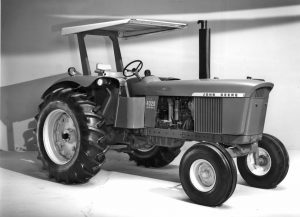
As the oil traveled through its course under the hood of the 4320, it eventually got back to its home in the oil pan. This pan had been expanded from 12 to 16 quarts for the new tractor to further improve its ability to keep its cool. A larger oil filter was used for the 4320, as well, to clean all of this oil efficiently. This oil filter was mounted externally on the side of the engine, rather than in the oil pan as had been done on the 4020. To nearly eliminate the mess produced during routine maintenance to the tractor, a drain plug was added underneath the vertically mounted filter, allowing the tractor’s owner to neatly drain the oil from the filter before removing it for replacement.
Now, what about the coolant? The cooling system increased from the six gallons in the 4020 to seven for the John Deere 4320 and a larger radiator was used. A water pump with a different style of impeller that was engineered to provide a bit more oomph to the coolant was installed, keeping the coolant moving swiftly on its course through the engine. The thermostats on the 4320 were moved to a new location where they sat side by side. This simplification made for fewer places where coolant could leak.
The air used to cool the 4320 was now pushed with a new fan that was surrounded by a larger shroud. This larger fan and the altered water pump required more power to run, so an additional belt was added to run them.
Air was brought into the engine through the air filters in a metal canister in front of the radiator and under the hood. Air from outside of the tractor was brought into the system through the front of the hood, was cleaned by pre-cleaner fins in the air cleaner canister and then cleaned more thoroughly as it traveled through a two-stage paper element air filter. From this point, the air went into the turbocharger to eventually enter the engine as a vital part of the charge. Any dirt or debris that was in the air when it got to the pre-cleaner was dropped into an unloader valve that released it back outside of the tractor. The advantage of this system was that the tractor looked a bit more streamlined and attractive and there was one less protuberance in the hood to obstruct the operator’s line of sight.
The disadvantages of this system, though, outweighed the benefits. Turbocharged engines require a vast amount of air to run properly. Due to this, the air cleaner in its confined space under the hood in the 4320 could only perform at full function for a certain amount of time, as the dirt kicked up by the tractor and implement quickly filled the paper filter. Many farmers must have been rather dismayed to find that their new 4320 often required the operator to clean out the air filter several times in the course of a workday to keep the engine running properly. Fortunately for them, Deere quickly saw that this was a problem and many 4320s with vertical air stacks to bring in the higher, cleaner air can be found today.
With the exception of the matter concerning the air cleaner, Deere’s improvements and upgrades were more than enough to assure that the 4320 was a reliable and durable tractor. In fact, the quality of the 4320 can be rated right up there with the 4020, as the tractor was more than capable of handling the power that ran through it. In fact, it was not uncommon for a 4320 to have the fuel screw in its injection pump turned out, allowing the engine to produce in excess of 135 horsepower. More than a few tractors undoubtedly had this done early in their lives. Those tractors are probably still hard at work today without any signs of excessive wear.
The rest of the 4320 made obvious the tractor’s forebear. The options list was identical to that of the 4020 with one glaring exception. For whatever reason, a Power Shift transmission was never offered for the 4320. Why this was the case is impossible to say, as both the 4020 and the larger and more powerful 4620 could be purchased with a Power Shift. Perhaps the option was left off the 4320 simply because Deere was trying to keep the retail price of the tractor down and a Power Shift was a rather pricey item. Due to this, the Syncro-Range transmission was the only choice for the 4320. This was a fine transmission, to be sure, but it did lack a bit of the versatility and ease of the Power Shift. Deere used a slightly larger clutch in the 4320 than in the 4020 to help handle the extra power.

The 4320’s features list looked much like the 4020’s. Power steering, power brakes, a rockshaft, a single remote cylinder, a three point and a 540-1000 RPM PTO were standard equipment, though a penny-pinching farmer could leave some of the options off the tractor if he couldn’t fathom a need for them. Options included up to three remotes, a Roll-Gard structure with or without a canopy and a Hinson Roll-Gard cab with optional air conditioning and heating.
As with most of the line, the 4320 could be purchased with any of a number of front ends. An adjustable wide front end was standard equipment, but a single front wheel, rigid or Roll-O-Matic dual front, narrow or wide adjustable front ends and a fixed front axle were also available. Two adjustable width hydraulic power assist front ends were also available for the 4320. These are uncommon today and were prone to some problems, but a tractor furnished with this option would bring top dollar today.
Rear tires for the 4320 came in 15.5 x 38, 16.9 x 38, 18.4 x 34, 18.4 x 38, 20.4 x 34 or 23.1 x 30 inch sizes, as requested by the buyer. If he wanted duals in the rear, he could choose from 13.6 x 38, 15.5 x 38, 16.9 x 38, 18.4 x 34 or 18.4 x 38. These options were mounted on either the regular rear axle, which went from 60 to 91 inches, or any of three longer versions: the 60 to 97 inch long rear axle, 67 to 105 inch extra long rear axle or 66 to 115 inch special long rear axle. To make sure that these tires were getting the muscle to the ground efficiently and evenly, front and rear weight packages were available as well.
The 4320 had a solid production run and about 20,000 tractors left the factory door during the two years that it was built. The tractor was the right machine for the time, providing a “big” option for row crop farmers and making sure that John Deere kept its place in that market until the Generation II tractors were released.
While the 4320 was only sold as a row crop platform, a few were used as standard tractors. In fact, simply picking the right options, such as a fixed front end, heavy duty fenders and operator shields, would outfit a 4320 pretty much exactly as Deere would have done had they actually built a standard version of the tractor. A 4320 outfitted this way would be an uncommon find today and probably particularly attractive to a collector.
Similarly attractive would be one of the 4320 tractors that left the factory painted in industrial yellow. While it is likely that only a very few of these ever existed, they are out there and, thanks to their scarcity, they are desirable.
The New Generation tractors have been collectible for quite some time, even these late versions. While they may not be everyone’s proverbial cup of tea, there is no doubt that they were an impressive tractor in their day. Even if you plan to keep the old girl working, wouldn’t the work be more fun on a nicely restored tractor that you would be proud to take to a show? If you are not yet sure whether a 4320 deserves a place at a tractor show, think of it this way—this fall marks the 40th anniversary of the beginning of the 4320’s production run. Would you have considered bringing an “R” to a show in 1990? I thought so.
Story by Benjamin Hain.
Originally published in Green Magazine, the #1 magazine for John Deere tractor, equipment, and memorabilia enthusiasts.
Follow this link, https://greenmagazine.com/ for more John Deere stories from Green Magazine.
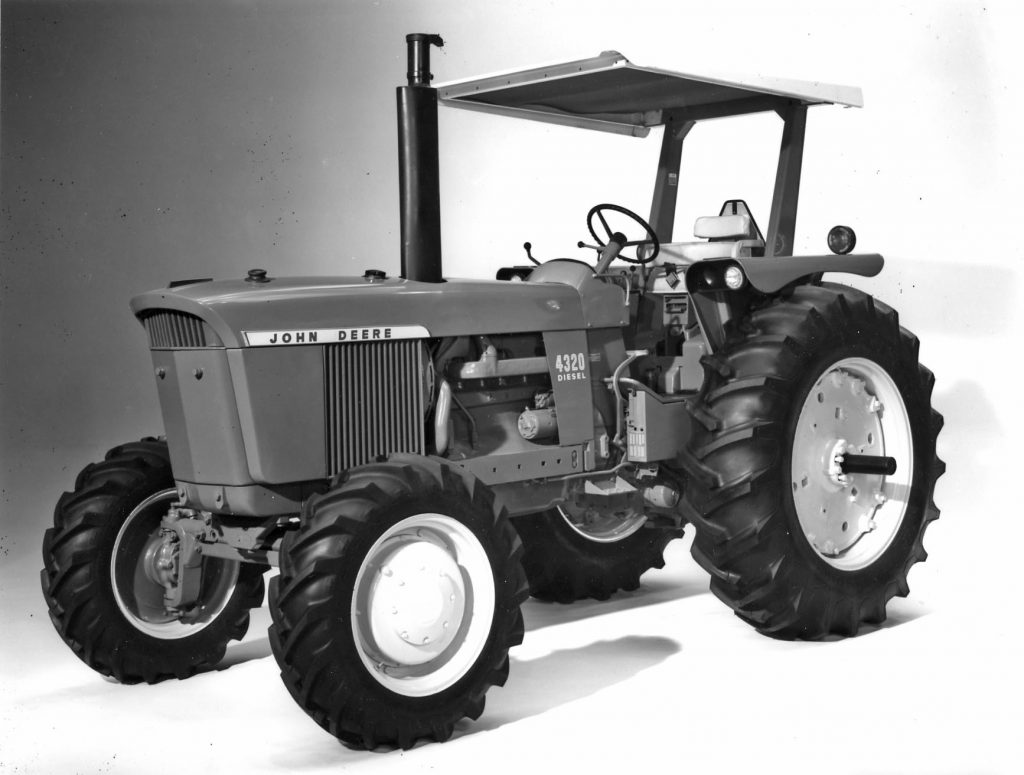
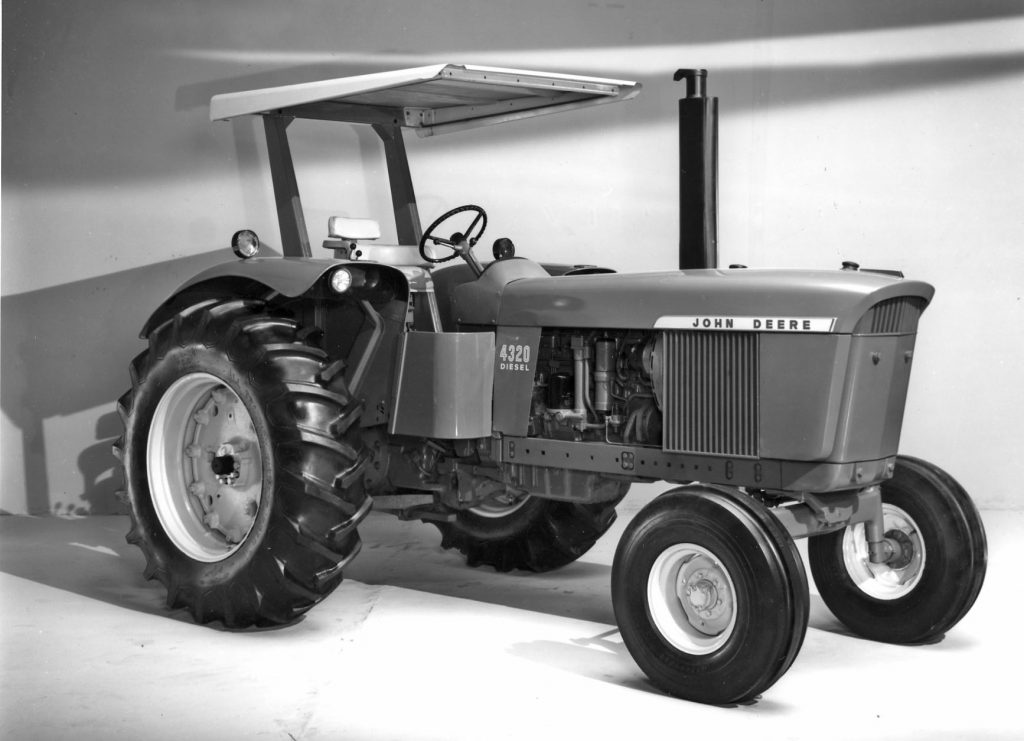
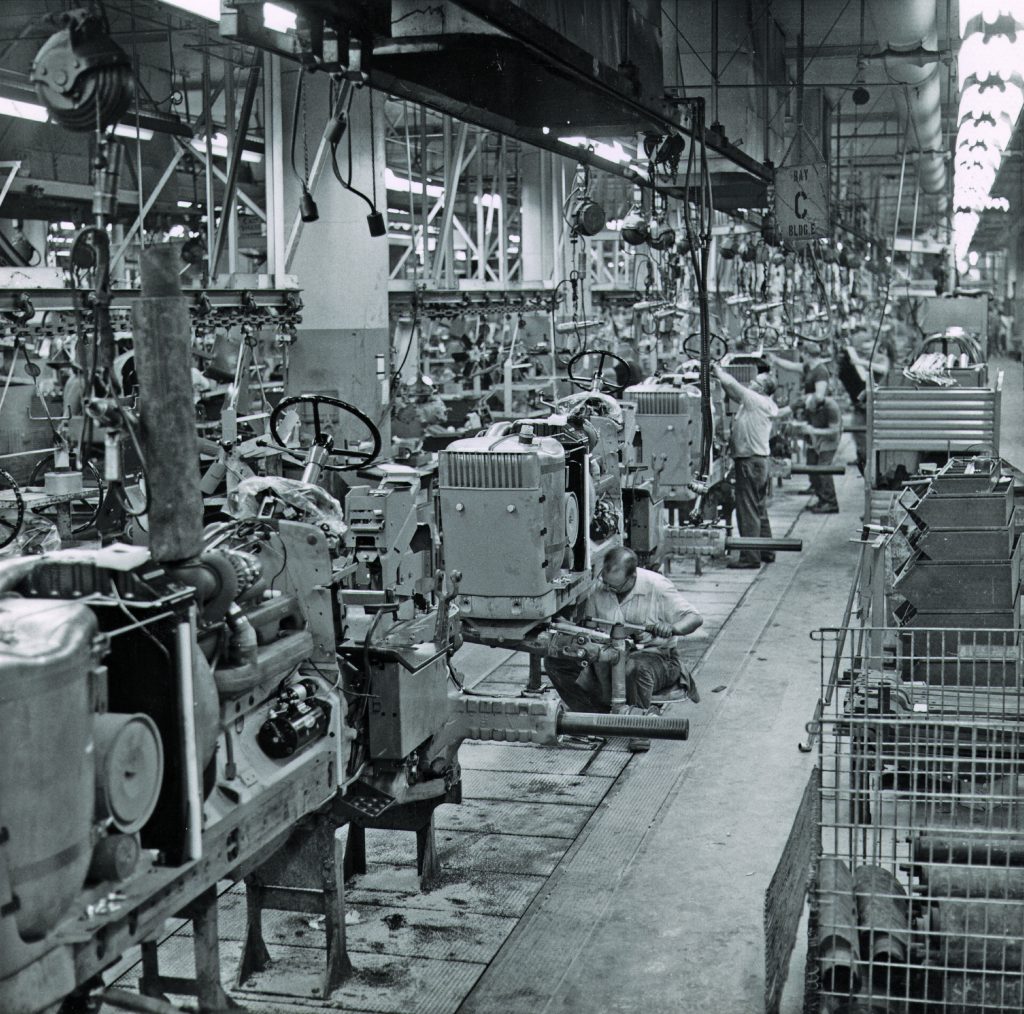
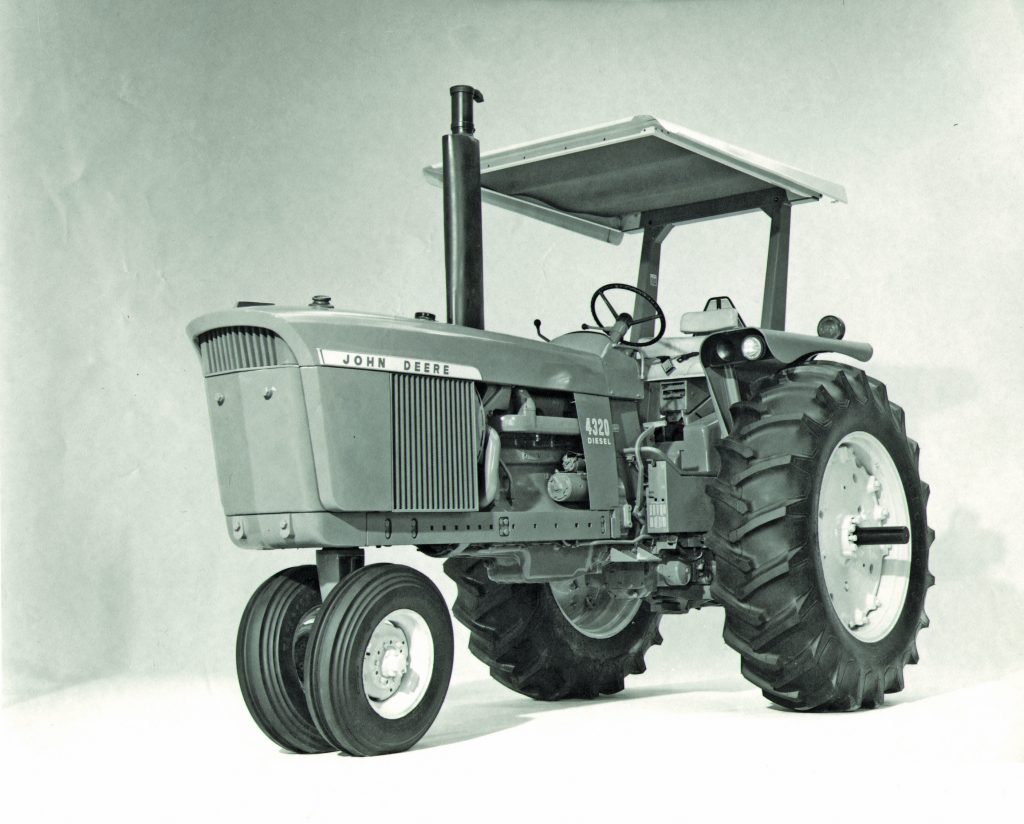
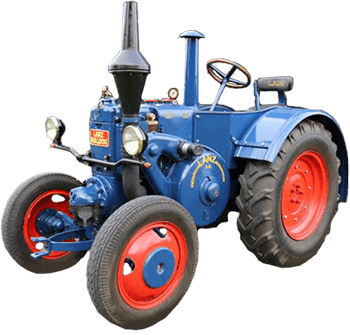
I have a 6135e (this beauty: https://www.allmachines.com/tractors/john-deere-6135e). It’s super fascinating to me to see how much change the JDs have gone through in a span of a few decades. Someone should do a side-by-side comparison or competition for these two machines.